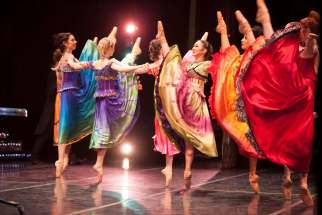Life’s a cabaret in RWB favourite Ballet transports audiences to 19th-century Paris
Read this article for free:
or
Already have an account? Log in here »
To continue reading, please subscribe:
Monthly Digital Subscription
$0 for the first 4 weeks*
- Enjoy unlimited reading on winnipegfreepress.com
- Read the E-Edition, our digital replica newspaper
- Access News Break, our award-winning app
- Play interactive puzzles
*No charge for 4 weeks then price increases to the regular rate of $19.00 plus GST every four weeks. Offer available to new and qualified returning subscribers only. Cancel any time.
Monthly Digital Subscription
$4.75/week*
- Enjoy unlimited reading on winnipegfreepress.com
- Read the E-Edition, our digital replica newspaper
- Access News Break, our award-winning app
- Play interactive puzzles
*Billed as $19 plus GST every four weeks. Cancel any time.
To continue reading, please subscribe:
Add Free Press access to your Brandon Sun subscription for only an additional
$1 for the first 4 weeks*
*Your next subscription payment will increase by $1.00 and you will be charged $16.99 plus GST for four weeks. After four weeks, your payment will increase to $23.99 plus GST every four weeks.
Read unlimited articles for free today:
or
Already have an account? Log in here »
Hey there, time traveller!
This article was published 25/02/2020 (2115 days ago), so information in it may no longer be current.
The Moulin Rouge, a cabaret in Paris founded by Charles Zidler and Joseph Oller in 1889, has been a source of inspiration for many artists, but only a select few are bestowed the honour of using the name in their work.
Ballet preview
Moulin Rouge — The Ballet
Royal Winnipeg Ballet
● Choreographed by Jorden Morris
● Wednesday, 7:30 p.m,. to March 1
● Centennial Concert Hall
● Tickets: $38.57-$132.57 at rwb.org or by calling 204-956-2792
Royal Winnipeg Ballet choreographer Jorden Morris is one of them.
“I forget what the actual fact is but there’s something like 20 to 25 companies who ask to put the name Moulin Rouge on something every day and 99 per cent of the time the answer is no,” Morris says of the moniker, which is a registered trademark. “We’re the only ballet company allowed to have the title ‘Moulin Rouge’ for ballet in the world.”
It was Oct. 17, 2009, when RWB’s Moulin Rouge — The Ballet had its world première, performed on the Centennial Concert Hall stage. It was a roaring box office success, so much so that the RWB remounted it in 2013.
It has also been made into a film, directed by Pierre and François Lamoureu, and has toured around the world; it makes a triumphant return to the concert hall Wednesday.
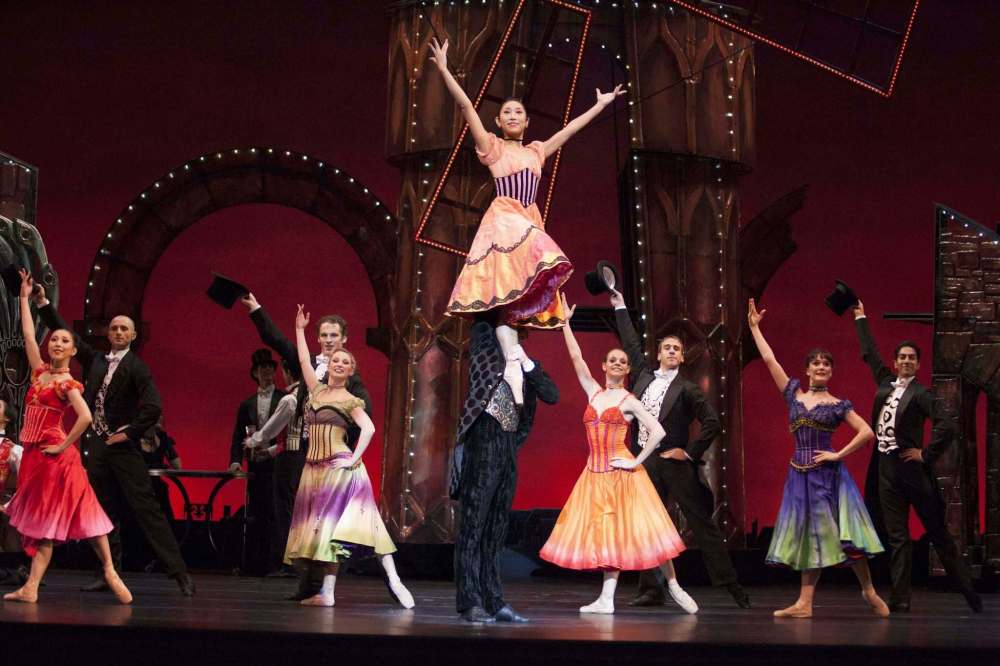
The titular cabaret — the Red Mill in English, it’s known for the red windmill on its roof — was established during an era in Parisian history known as La Belle Époque, an immensely productive period for art, music and literature.
To bring not only the Moulin Rouge itself but the world of Paris to life, Morris was aware of how important it was to evoke the sense of possibility and wonder that permeated the time period.
“You have to remember there were people like Edgar Degas painting at that time,” Morris says, referencing the French artist famous for his pastels and oil paintings of ballerinas, “so the work had to reflect that.”
Morris also drew upon the sounds of the era to create a compelling score for the ballet.
“What I try to do with my larger works, specially the dramatic storytelling ballets — for instance Peter Pan, Moulin Rouge and The Great Gatsby — is to find music that was being written at the time the story was actually happening.”
“For Moulin Rouge I went to Paris and actually worked at the Moulin Rouge for a bit, got to know their building and found the predominantly French composers that were writing music in that time period of between 1886 and 1889, right around the first World’s Fair.”
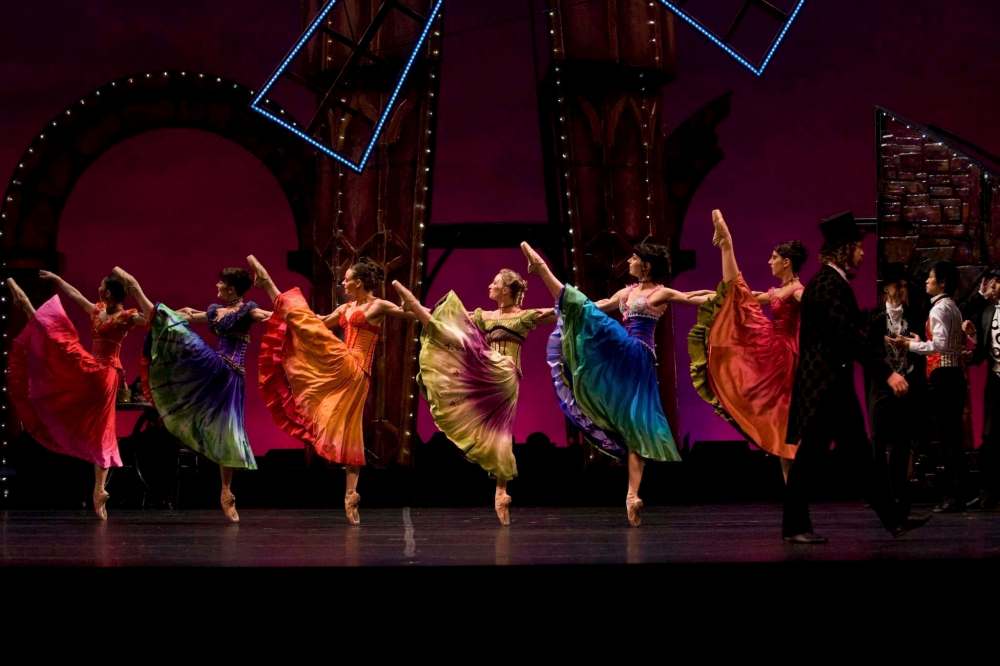
The score features authentic period music by German-French composer Jacques Offenbach, Russia’s Dmitri Shostakovich and the French impressionist composer Claude Debussy, as well as anachronistic music, such as Edith Piaf’s La Vie En Rose.
“The people at the Moulin Rouge in Paris really appreciated the fact that I did that research to find those composers that were writing music at the time, so that it was historically correct but also lent itself to the storytelling.”
Storytelling was a core part of the creation of the ballet for Morris, who worked with local dramaturge Rick Skene to develop the narrative of the piece.
“I wanted to make it dramatically relevant and poignant, and make sure that there was serious acting and serious dancing.”
“We really had to figure out a hybrid version, sort of a fusion, between traditional can-can and the pointe work. I was also really aware and cognizant that the tango was a very prominent dance form at the time, from immigrants from South America.” – Choreographer Jorden Morris
The story is a classic tale of forbidden love, with all the standard Moulin Rouge associations in place, including absinthe, house artist Henri de Toulouse-Lautrec, an enormous windmill and the can-can, the high-kicking style of dance made popular — and provocative — by the cabaret’s chorus girls.
But for Morris, creating the work was about looking past all of that and digging deeper into the mythos of the legendary place.
“The world was just starting to expand,” Morris says of the time period. Though the ballet features primarily classical pointe work, Morris had the tricky task of incorporating dances from around the world that were beginning to permeate Parisian culture.
“We really had to figure out a hybrid version, sort of a fusion, between traditional can-can and the pointe work. I was also really aware and cognizant that the tango was a very prominent dance form at the time, from immigrants from South America.”
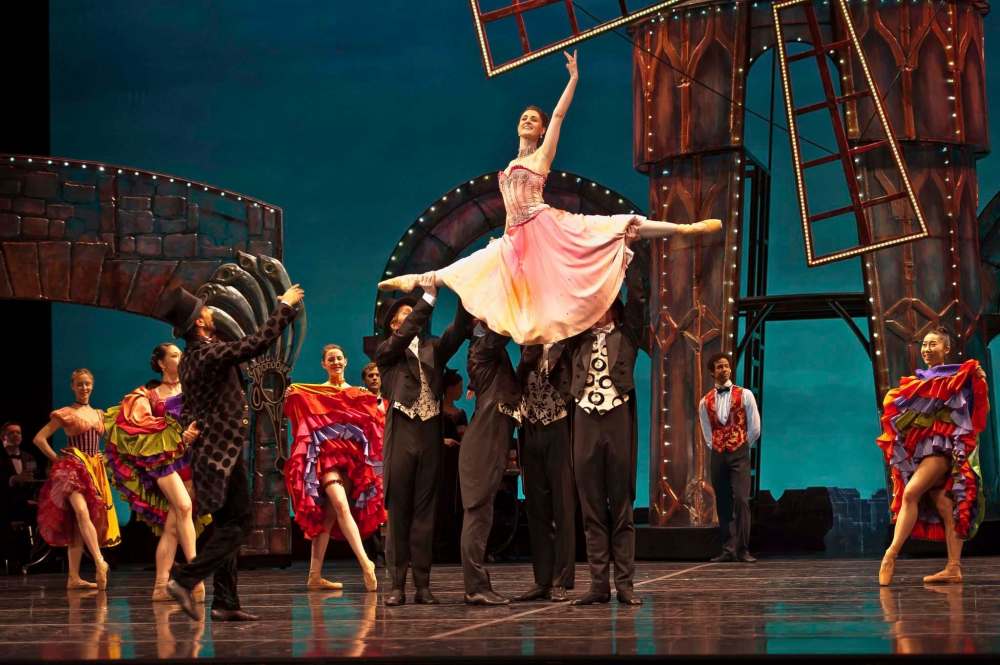
Of course, doing the tango, the quadrille, or the can-can “en pointe” is no easy task.
“Those are tough dance manoeuvres to put in pointe shoes,” the choreographer says. “But it was clear what the menu of dance needed to be to make a successful production.”
Morris, who is originally from Banff, Alta., began his career as a dancer. After retiring from his position as principal dancer with the RWB, he embarked on a career as a choreographer, receiving his first commission in 2006.
“My first full-length commission was Peter Pan for André Lewis and the Royal Winnipeg Ballet. We’ve known each other for a very long time,” Morris says of the company’s artistic director and CEO. “We were roommates on tour when we were both dancers. He’s a great, dear friend.
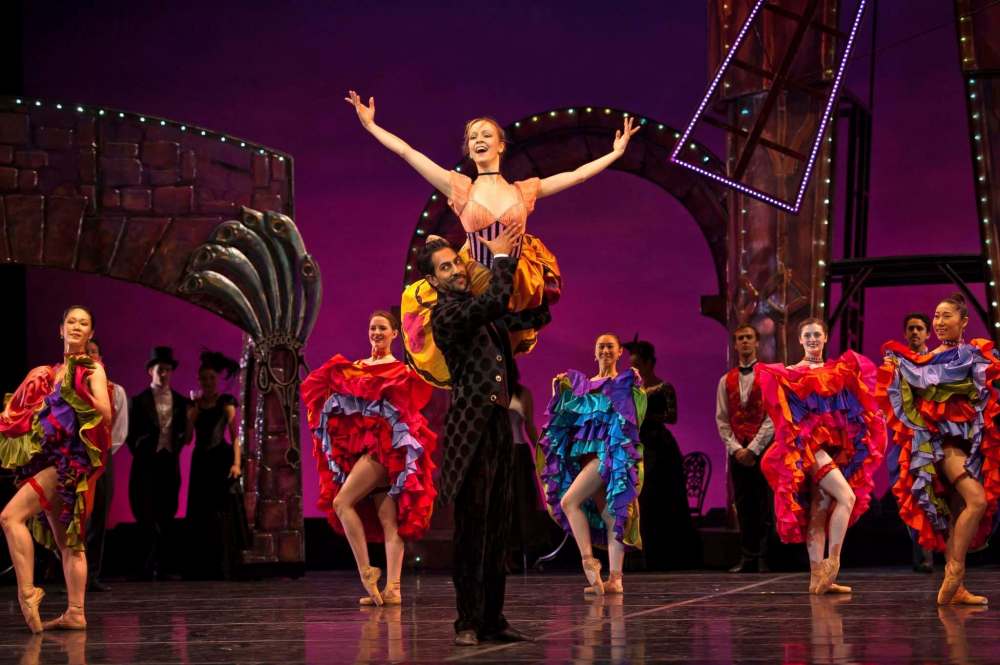
The choregrapher says the creation of a full-length ballet is a two-year process.
“From concept to storyboarding to putting the musical soundtrack together, costume designs, lighting designs, set designs… it takes about two years to get everything sort of in the right place to hit the stage.”
With all those pieces in place, Morris is quick to note how much chance is at play in any new work.
“Sometimes as a choreographer or director, you just sort of get lucky and everything works. I think we were fortunate enough to hit Moulin Rouge — The Ballet out of the park.”
Frances.Koncan@freepress.mb.ca
Twitter: @franceskoncan

Frances Koncan (she/her) is a writer, theatre director, and failed musician of mixed Anishinaabe and Slovene descent. Originally from Couchiching First Nation, she is now based in Treaty 1 Territory right here in Winnipeg, Manitoba.
Our newsroom depends on a growing audience of readers to power our journalism. If you are not a paid reader, please consider becoming a subscriber.
Our newsroom depends on its audience of readers to power our journalism. Thank you for your support.







